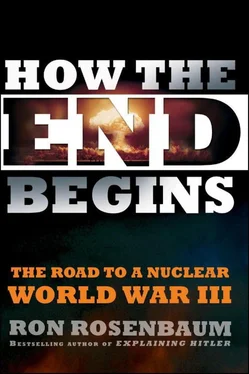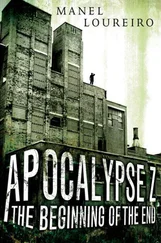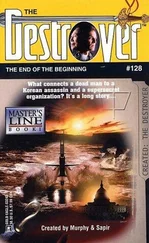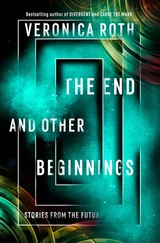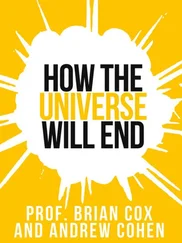The nuclear taboo can be seen as a coalescing of post-Nagasaki second thoughts at least in the beginning. But eventually a passive culture of nuclear dread and opprobrium grew into a feeling among a majority of civilian and military leaders that nukes were the untouchables among weapons whatever the war fighters said, the shameful skeletons in the closet, the zombies among weapons that scared us from ever opening the door.
They were weapons designed to terrify but not to be used. And paradoxically antinuclear culture, nuke porn played a role in deterring their use by graphically subjecting the entire population to nightmarish enactments of nuclear terror. We terrorized others, but we also terrorized ourselves. In that terror was the beginning of the taboo.
But is the taboo enough? There’s a section in Nina Tannenwald’s book in which she discusses the most explicit, weighty formulation of the nuclear taboo: the 1982 statement by the National Conference of Catholic Bishops. This was the one that not only declared nuclear use immoral, but said even threatening the use of nuclear weapons, as in deterrence, is unequivocally evil.
Here the taboo could undo the taboo. If there is no certainty of retaliatory response, because tabooed, a foe would be more likely to use or threaten to use nuclear weapons for a first strike regardless of the taboo since they would have reason to believe retaliation was taboo.
I dwell on the taboo, because it seems to me to embody the tragic paradox that efforts to prevent the outbreak of nuclear war since 1945 have devolved into: the development of a taboo that undermines itself, undermines itself by subverting deterrence, convincing a foe that it might not suffer nuclear reprisal or face premeditated nuclear attack for its own aggressive nuclear or conventional attacks, because of the force of the nuclear taboo, thus increasing the likelihood of a nuclear outbreak by those for whom the taboo is less powerful than some other imperative.
And there’s the one-sidedness of tabooed nuclear intentions—we have no indication that such a taboo has been inculcated into the Russian, much less the newer nuclear powers’, way of thinking. It doesn’t feature much in whatever internal discussions we know of that go on in North Korea for instance. The taboo may have grown stronger, but taboos are made to be broken. In a sense they are only defined when they’re broken.
It has become clear to me through decades of study of nuclear strategists devising all sorts of chess games with their missile and missile-alert postures and sending each other cryptic messages in footnotes that the one step that can be taken now is for the two superpowers to listen to the long ago advice of Admiral Arleigh Burke, who warned against their instability—and yank those land-based missiles out of their silos so that they don’t present a threat of accidental war, or a reason to believe either side is imperiled by a surprise first strike capability.
The terrible wrong turn in nuclear policy that was signaled by the Air Force land-based missile triumph over Burke’s sub-based “finite deterrence” can and must be reversed. It is far more important than reducing the number of land-based missiles to 1,000 or 1,500 by 2018. It must be done now.
It is abundantly clear that we have no need to maintain a “strategic triad”—missiles, bombers, and submarines—and an army of nuclear strategists to worship at the triune perfection of the “nuclear triad.” There is nothing sacred about the triad although it has become the object of Trinity-like worship by the Pentagon and its paid civilian strategist-enablers. Of the three legs of the triad, the land-based silo-embedded missiles are the least subject to human control in a crisis; they represent the turning over of the Armageddon decision in great part to automation, to “dual phenomenology” and PERIMETR. If you want to put more distance between ourselves and Armageddon now, then pull those missiles out of the ground and pour quick-drying cement into the silos. That doesn’t mean disarm. It means going to a subs-only deterrent posture (assuming a diminished role for aging bombers).
“In the coming years,” Burke wrote in his confidential memo, “the ability to consider and weigh such decisions [to launch or not to launch] will increase in importance. When both sides have quantities of ballistic missiles there may be periods of tension in which there are some indications that missiles might be launched by the enemy but these indications are not positive. Our political leaders will then be in a quandary as to whether or not to launch which missiles before they are sure the enemy has launched its attack. If they wait, our ballistic missiles in known locations may be destroyed. If they launch on mistake, we will have started a devastating war.” [332]
One development in favor of a neo-Burkean finite deterrence plan is that the Russians are already on their way to modernizing their submarine fleet. They should have no qualms about the reliability of their sub force at whatever level it’s frozen. The nuclear missiles on the new Yasen-class Russian subs have been reported by the Moscow news service Novosti to have a range of three thousand miles. [333]
That’s enough deterrent power, don’t you think?
It’s remarkable how the thinking behind Burke’s half-century-old “finite deterrence” has emerged again in the state-of-the-art “minimum deterrence” and “minimal deterrence” plans advanced almost simultaneously in 2008 respectively by Hans Kristensen of the Federation of American Scientists [334]and Dr. Jeffrey Lewis of the New America Foundation. [335]
Still the sanest solution to an insane, obscene problem seems to me a submarine-only Burkean “finite deterrent” configuration with enough subs for devastating deterrent retaliation (but not enough for a first strike “war-fighting” capability). And yet even the sanest solution is likely to involve or escalate to genocide if it fails, even if it is the least likely to fail, and the most likely to prevent genocide. It too must be weighed in an awful calculus that balances the diminished likelihood but nonetheless indubitably possible outcome that a system that was designed to reduce the chance of genocide commits us to genocide if the threat fails.
It can sometimes seem astonishing to anyone who seriously considers the continual, indeed rising, level of risk of nuclear war in this second nuclear age to witness the continuing denial, the inexplicable ability of much of the world to ignore a fate hurtling toward us. The mechanisms of denial have become so sophisticated by now, we don’t notice them, the way we scarcely notice the millions of tons of nuclear warheads hidden beneath the surface of the Great Plains.
This was the virtue of Obama articulating his dream of Zero whatever fate it ultimately has. It makes denial of the reality more difficult.
What I hoped to be able to say at the close of this book is “At least you can’t say you haven’t been warned.”
So let me say it for emphasis: At least you can’t say you haven’t been warned.
But just to focus the attention of those who have gotten this far: the three most likely sources of nuclear war right now are an accidental war between the United States and the former U.S.S.R. triggered by tension and error. And a second Holocaust–driven nuclear war in the Middle East. The latter may be impossible to forestall. And then there is Pakistan.
If a Middle East nuclear war is unlikely to be avoided the other chief danger—accidental or deliberate nuclear war between the superpowers—can be diminished at least. If those malevolent silo-based missiles on hair-trigger alert were destroyed on both sides, Admiral Burke’s plan might be a way of convincing the military establishments of the nuclear powers that they were not engaging in disarmament, so much as a more certain deterrence by shifting from land-based to sea-based minimal deterrence.
Читать дальше
